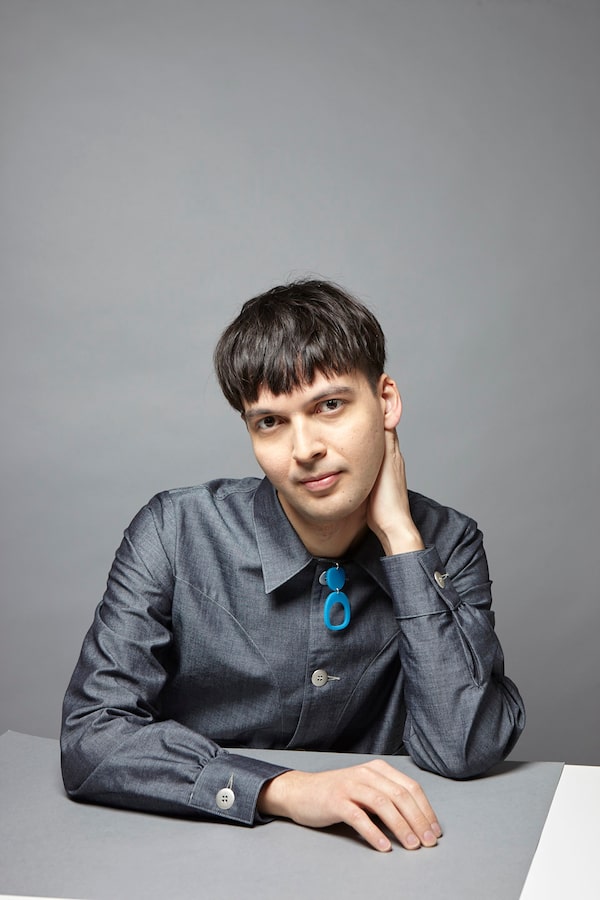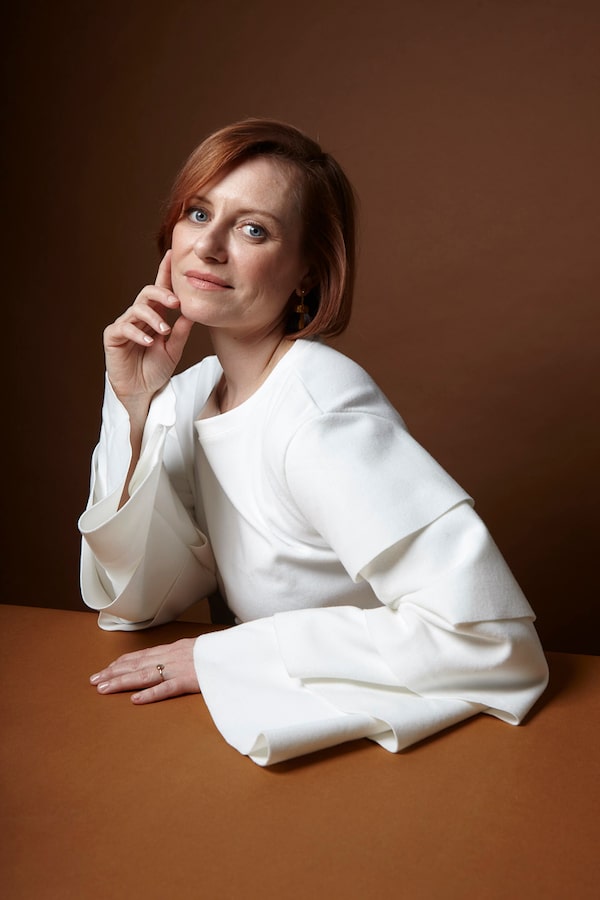Warren Steven Scott sparked a discussion about cultural appropriation with his geometric jewellery

Warren Steven Scott.May Truong
Some of his customers simply assume Warren Steven Scott is drawn to retro design. His eye-catching laser-cut jewellery does have mod appeal, after all. In fact, the inspiration has been drawn from the bountiful past of Indigenous art, specifically the shapes found in Coast Salish designs of the Pacific Northwest. “They deal a lot with positive and negative space, form, line and repetition,” says Scott, who is a member of the Nlaka’pamux Nation.
A graduate of Ryerson University, Scott honed his skills working for designer Jeremy Laing and the brand Comrags before earning acclaim for a runway collection presented at the 2018 edition of Indigenous Fashion Week Toronto. Now, part of Scott’s work is to be an advocate and ambassador for the Indigenous community; in particular, he’s educating his audience about cultural appropriation, which still exists in many corners of the fashion world.
Read the full Style Advisor: April 2019 edition
After launching his e-commerce business last fall, Scott started receiving orders including many from the Indigenous community, who discovered and spread the word about his wares across social media. He also received messages asking whether non-Indigenous customers could wear them. “There definitely is a fear,” he says. Scott’s ensuing Instagram post explained that if you’re purchasing products from an Indigenous designer, you’re supporting his or her livelihood and community. “A message to non-Indigenous people. It is not cultural appropriation to wear jewellery designed by an Indigenous person,” he wrote. “My jewellery can be worn by all and is designed for all.” – Odessa Paloma Parker
For more information, visit warrenstevenscott.com.
Sarah Power created a dynamic space for emerging Canadian designers to show and sell

Sarah Power.May Truong
In 2013, Sarah Power was shopping in a Berlin boutique when a German designer came in to replenish her jewellery. The two started chatting and Power bought one of the designer’s pieces. “It was such a cool experience.” Power says. “I wanted to support her, and that was the moment when I thought, ‘I have to do this.’”
The chance meeting triggered an idea that had been in Power’s head since 2007, when she met a handful of Canadian designers at the now defunct Clothing Show in Toronto. In 2014, Powers left her job as a teacher in Hamilton and her Inland pop up market was born to bring Canadian designers face-to-face with shoppers. “[Inland is] a place where consumers can learn the stories of their clothes,” she says. The initial show featured 80 labels and attracted 1,000 shoppers. “It was immediately evident that this type of platform was needed in the industry, that there wasn’t enough opportunity for Canadian designers to be showcasing their work,” she says. The market will host its 10th edition in Toronto this May.
“When I started Inland, several people told me – designers included – that no one cares if something’s made in Canada,” she says. But over the past four years, she’s watched that story change. “I think the brands are much more confident and they understand that transparency inspires loyalty.” Power has growth in mind, too. Guelph, London and Muskoka are some of the new locations she’s considering in Ontario, and a digital platform could help bring in a global audience. “I want to continue in any way I can to increase the visibility and accessibility of Canadian design,” she says. – Maryam Siddiqi
For more information, visit madeinland.ca.
Tomi Gbeleyi turned a beauty blindspot into a booming cosmetics community

Tomi Gbeleyi.May Truong/May Truong
When Tomi Gbeleyi was cast in her first fashion show, she arrived excited and ready to go. Not everyone backstage was as prepared. “When I got to hair and makeup, there was this hush over the room. The makeup artist was scrambling to find products, the hair person was fumbling with my curls,” she says. It was 2014, and the beauty team was not equipped to work on Gbeleyi, the only black model in the show. “In that moment, I almost felt like a burden on everybody else.”
For people of colour, finding suitable shades of cosmetics is an ongoing challenge. To compensate, many makeup wearers develop hacks like mixing custom shades, something that Gbeleyi refers to as “making it work.” “I just figured to be good at makeup for dark skin, you had to be good at hacking what’s out there,” she says. Gbeleyi decided to teach herself professional makeup application by watching YouTube tutorials created by women with similar skin tones. “I was suddenly exposed to this huge community of women exchanging information online,” she says. Inspired by the inclusive content she saw, Gbeleyi started an Instagram account, Makeup for Melanin Girls, which now has 169,000 followers.
In 2017, Gbeleyi made the leap into product development. Doing the groundwork at cosmetics trade shows and working in partnership with a lab, she developed a line of cosmetics for people with deeper skin tones. With nine SKUs (stock keeping units) in the eye and lip categories, Gbeleyi says she’s focused on developing a full suite of offerings, including skincare, so that beauty hacks can finally become a thing of the past. “We’re throwing ‘making it work’ out of the window,” she says. – Caitlin Agnew
For more information, visit makeupformelaningirls.com.